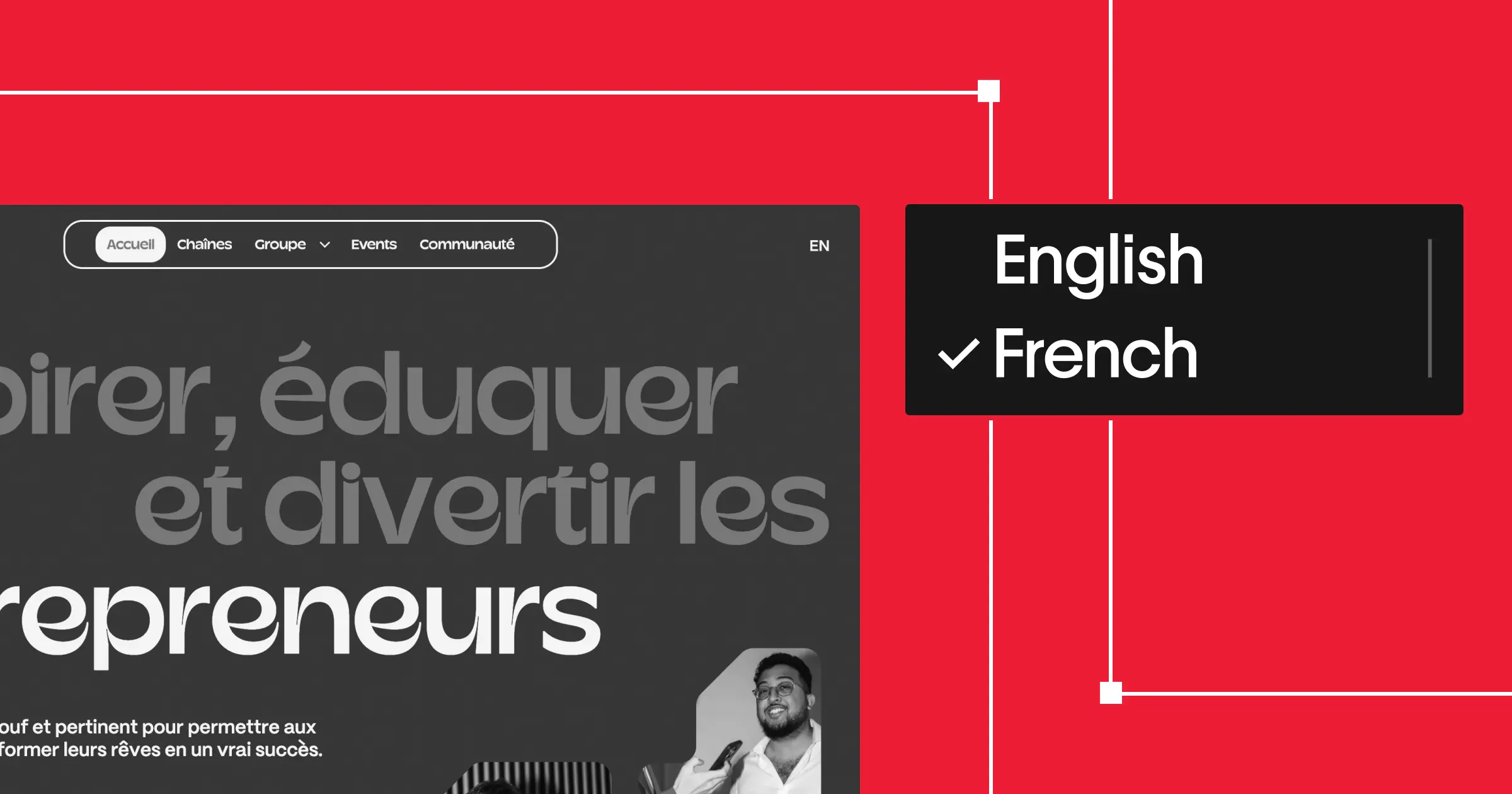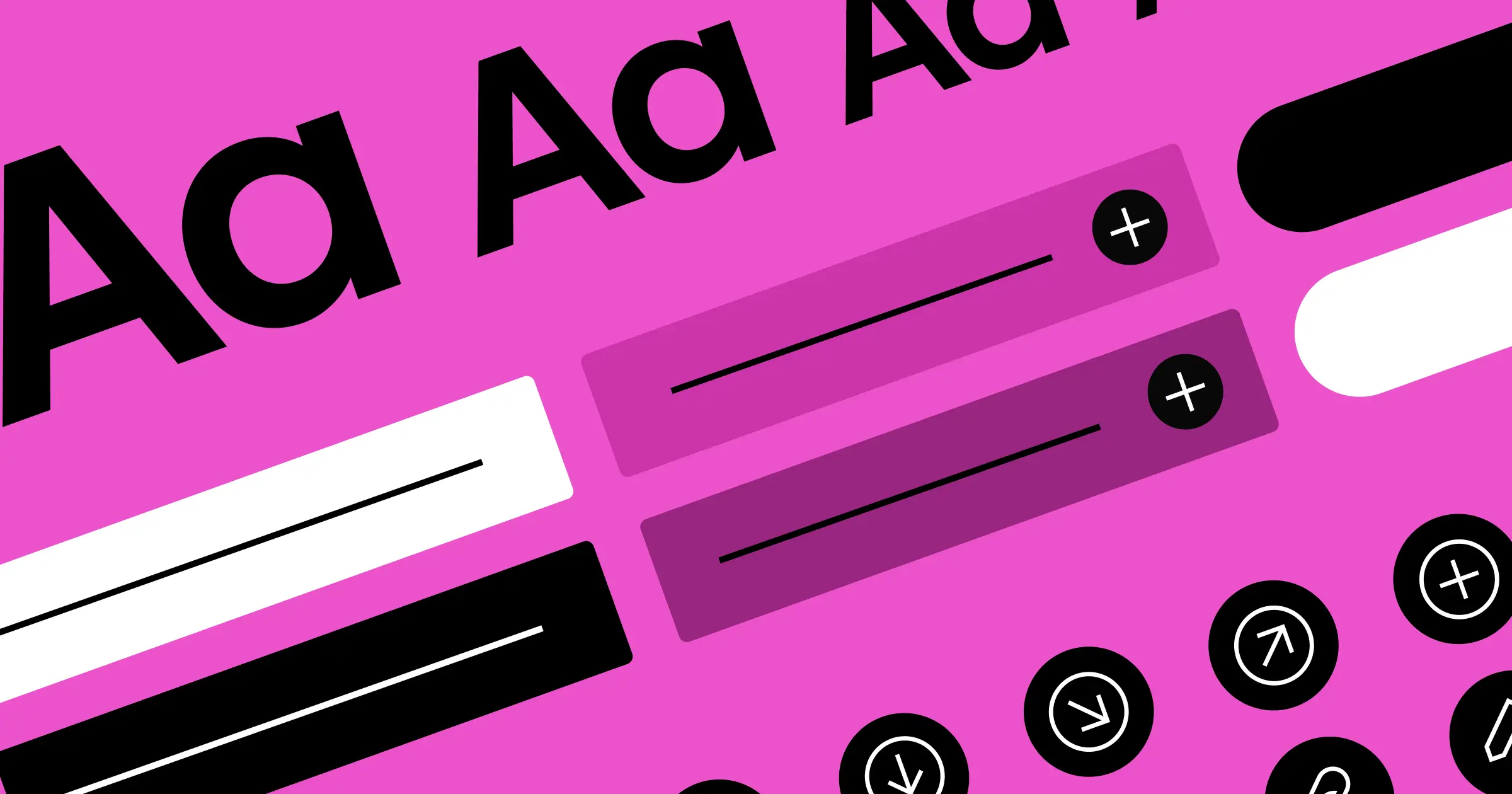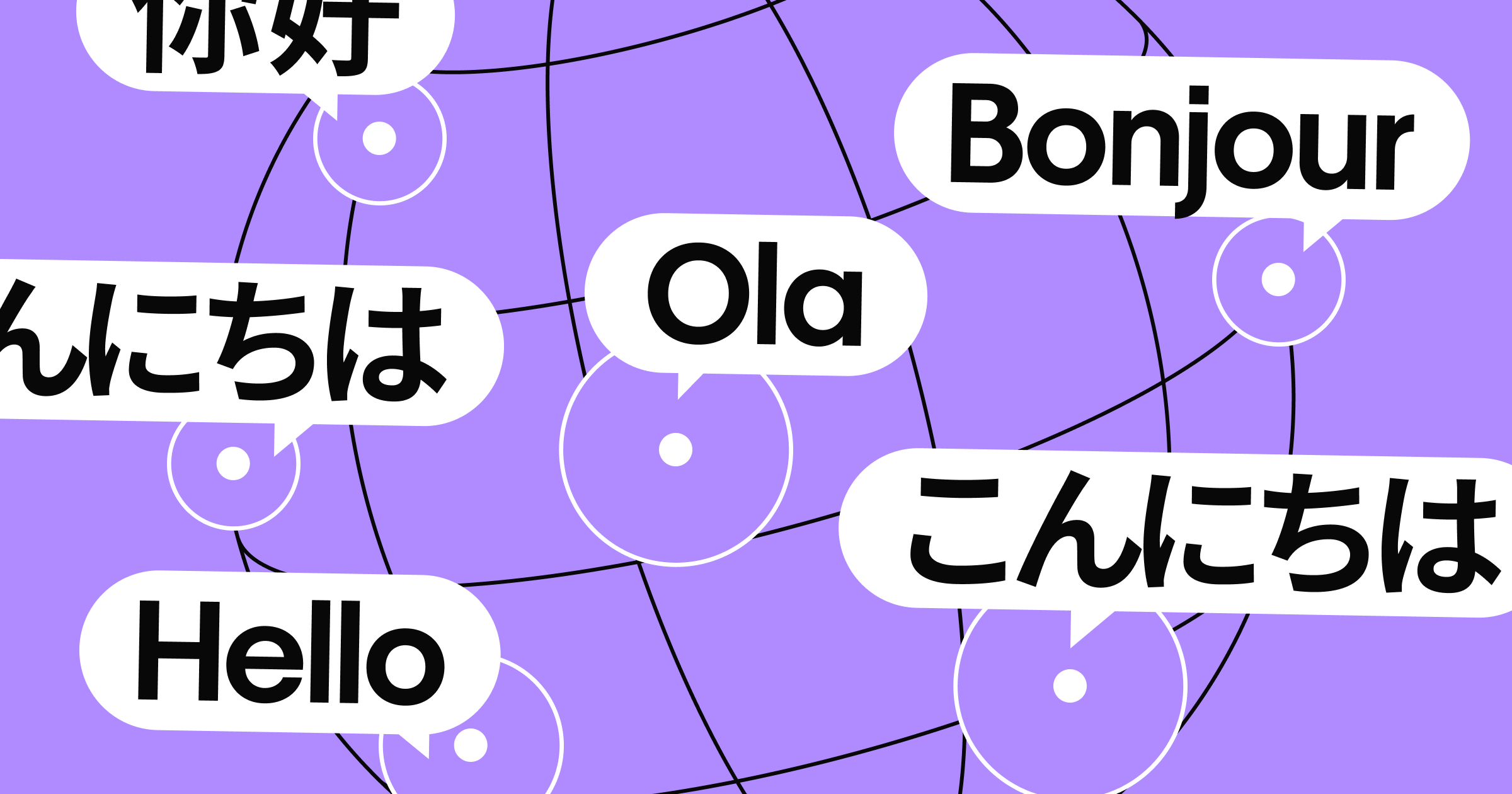For most businesses these days, scaling to different regions and locales around the world is vital for sustainability and growth.
And as a web development agency building for rapidly growing companies and organizations in Europe — we see this first hand. From an emerging Swiss brokerage firm, to a Parisian media agency — and everything in between — our client base prioritizes localization because it’s vital to reaching new markets and customers.
But as an agency, it’s up to you to deliver that value. Even though localization is a key part of your client’s strategy — they’re depending on you to offer strategic guidance through the design and development of a site. Your goal should be to hand off a localized site that seamlessly allows your client to go off and execute.
And that takes careful planning and project management.
Here’s our story on how our small but mighty team built a strategic, localized site for Flomodia, a media site dedicated to helping aspiring entrepreneurs across the world turn their dreams into reality.
A small, award-winning agency
Even though our award-winning team has worked for over 100 clients — we’re actually just a small team of seven people.
This makes the organization of our team extremely important. The work of each team member has an outsized impact, so it’s even more important that we get team structure right.
At Digidop, we’ve built our team full of folks who exemplify the T-shaped model. A T-shaped team member possesses deep knowledge and skills in a specific area (the vertical bar of the T) but also has the ability to collaborate across different disciplines (the horizontal bar of the T).
When you make up a team in this way, your overall team as a whole is able to:
- Focus on specific goals and allocate the right resources to each project, according to the customer's needs and the expertise of each team member.
- Delve deeply into their expertise (UX, UI, Development) and truly become an expert in their field.
- Challenge themselves and the project with their vision and skills.
Additionally, we always work collaboratively, with developers being on board from the very first workshops to facilitate easy information exchange throughout the project.
Who is Flomodia?
So, when Flomodia came on board, and explained their needs, we knew our team was set up to tackle the job. As we mentioned earlier, Flomodia is a Paris-based media and content company that’s dedicated to inspiring, educating, and entertaining entrepreneurs and aspiring entrepreneurs.
Their primary medium is video — and they post all kinds of video content such as,in-depth interviews with prominent entrepreneurs, as well as different tips for entrepreneurs looking to start or grow their own business — among other things/
On top of this, they also host live events and talks to build and empower the entrepreneur community in France and have sponsorships with companies like Fiverr, Ahrefs, Shine, and Monster.
Flomodia’s found great success in France, but when they came to us, they were looking to take their brand and content even further, and reach new audiences in the rest of Europe.
For their site, Flomodia prioritized SEO above all else. They wanted to make sure that their site was strategically optimized, so that they could effectively reach their target audiences through organic search.
They also wanted to have a CMS-first approach to the site. As content creators and event organizers, they need a lot of flexibility to scale their content quickly. They also wanted to launch new services independently in the future, so having a CMS-first approach with pre-built components would allow them to be fully autonomous.
Here’s how we approached the build.
How we built Flomodia’s localized site
All of our projects start with workshops to thoroughly understand the company and their goals. We conducted several workshops with Flomodia, involving both designers and developers, to propose a strategy and web architecture that best suited their needs. In this case, it was a highly optimized site for SEO and a CMS-first and components-first approach.
Then, we took those learnings and used Figma to sketch out the architecture. Once that was squared away we then went on Webflow to build.
When building we had these three considerations in mind:
- Wording: As a media company, the way they communicate and the words they use are crucial. They wanted to have 100% control over the content in both languages, and also have it optimized for SEO in both languages.
- Design: With several YouTube channels, some in English and some in French, the website needed conditional visibility ensure we were displaying the most relevant content to the target audience (or something more specific)
- An all-in-one platform: Flomodia wanted a streamlined solution that wouldn’t require them to rely heavily on third-party tools. With Webflow, everything was in one place, which made it the perfect platform to build their site.
Here’s the step-by-step on how we built Flomodia’s site.
- Initial setup on Webflow First, we began by importing the validated mockups into Webflow and created the site's design. This step laid a solid foundation for further development.
- CMS integration Next, we set up the CMS collections to enable Flomodia's team to manage content autonomously. We configured dynamic page templates for different content types such as articles, videos, and events, making updates and organization easier.
- Managing multilingual content To meet localization needs, we integrated content in both English and French. We implemented conditional visibility systems in the CMS to display relevant content based on the user's language and region. Language options via a drop-down selector and localization settings – like automatic routing – were also added for smooth navigation.
- SEO optimization Because SEO optimization was a priority, involving the configuration of meta tags, page titles, and descriptions for each language. We applied best SEO practices to enhance the site's visibility on search engines, thereby increasing its potential for organic traffic. Because Webflow’s platform offered a fully localized, best-in-class SEO right out of the box, it saved our team a lot of time for this step, while still giving peace-of-mind that we were delivering the most optimized site possible to the Flomodia team.
- Training and Documentation To ensure Flomodia's autonomy, we conducted training sessions and provided documentation for their team, covering the use of Webflow Localization and daily content management, ensuring a smooth transition.
One thing that we adjusted for during the build was that Flomodia’s business was evolving during the project. To mitigate this, we helped them focus on their short, mid, and long-term goals and defined a release roadmap to achieve quick wins by releasing parts of the website incrementally. This approach allowed them to start reaping the benefits of their site, including improvements in brand image, SEO, and conversion rate as soon as possible.
An award-winning site
When the site was fully delivered — the Flomodia team almost immediately saw results with their localized site. Their organic traffic tripled. and despite having even more content — with 17 collections, and 800 items — to manage with a localized site, they were able to launch new landing pages 50 percent faster — something that they couldn’t do with their previously unlocalized site.
And that’s not all, the Flomodia site received two Honorable Mentions on Awwwards, and our team is already hard at work again to now elevate Flomodia’s site with an exclusive “members area” that provides exclusive content for paying members.
Lessons learned
Even though our team was the ones delivering, we’re always learning, growing and iterating from each new project, and we learned a ton when it comes to building a localized site.
First, localization needs to be maintained, so always optimize your build and the platform you build from for your client’s future usability. Webflow Localization was particularly great for this because it allows you to manage everything from a single interface — versus using plug-ins or third parties.
At Digidop we always deliver every Webflow website with a component library — and for localized builds in particular, we found it especially helpful for the client because it allows the client to easily manage and personalize their localized content using the properties settings in Webflow. For us, this is a must-have for anyone building a localized site for a client.
The other thing that we also took away from this build was to make sure to create documentation and information for your client for a seamless handoff. It can be easy for your client to assume that everything — including translations — will be instantly localized, but if they want to add more content on their own, it’s important for them to understand what to do, so that they’re able to be fully autonomous.
Because Flomodia is so content heavy, and they’re creating new content every day — it was really making sure they understood how to localize and translate net-new content on their site using Webflow.
Building on Webflow and using Webflow Localization both for us and the client was awesome because it was very easy to implement, and very clear to use — which isn’t always the case when it comes to localizing sites. We loved how integrated the feature was and we can’t wait to get started on building even more localized sites and delivering value to our clients.



















Customize your site for visitors around the world
From design to translation to best-in-class SEO, Webflow Localization is an end-to-end solution for customizing your site for a worldwide audience.































